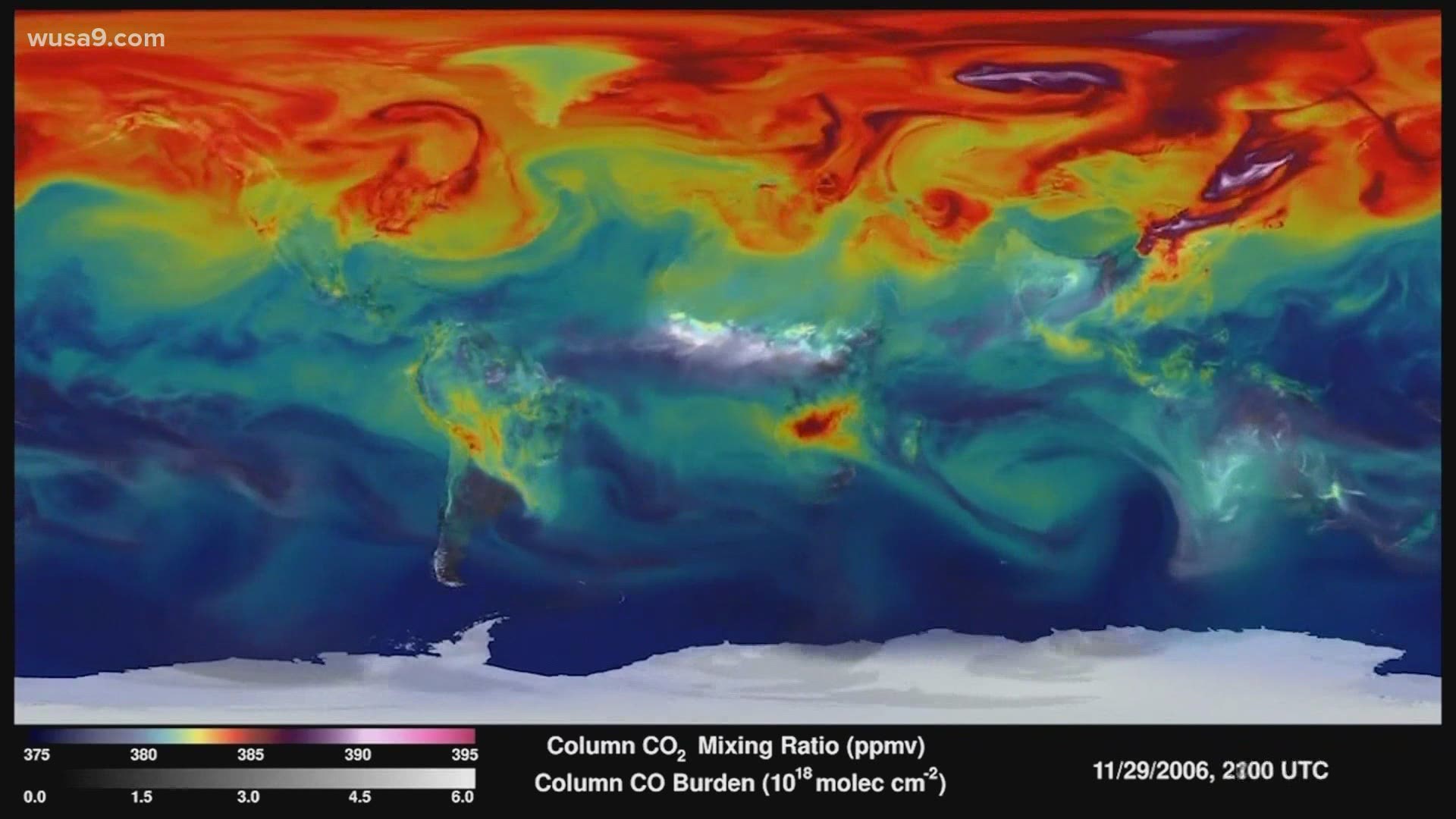WASHINGTON — Among all of the odd things that happened in 2020, we can now add another to the list. According to the National Aeronautics and Space Administration (NASA), 2020 tied as the warmest year on record, sharing the title with 2016.
This week NASA released the latest numbers on global temperatures indicating that global temperatures were 1.84 degrees Fahrenheit warmer than the baseline of the years 1951-1980. While that may not seem like much, it is making a difference in weather and climate phenomenons such as melting sea ice, sea-level rise and extreme weather events.
There were two events in 2020 that actually changed the amount of sunlight that reached the earth. One, the Australian wildfires and two, COVID-19. During the first half of the year, 46 million acres of land burned in Australia sending smoke and other particles 18 miles high in the sky, blocking sunlight and likely causing a slight cooling, according to a NASA analysis.
With more people working from home, staying home and driving less, these actions actually reduced particulate air pollution, giving many areas across the globe cleaner air. However, this also caused more sunlight to reach the air. This allowed a small amount of warming, but scientists noted that it could be significant.
NASA notes that there is a small level of uncertainty. The margin of error is 0.1 degree, but overall confidence levels are at 95%.


Why Should We Care?
Warmer temperatures across the planet are leading to a myriad of issues including sea-level rise which can lead to coastal flooding. There are also health impacts of global warming including an increased risk of heat-related illnesses and an increase in mosquito-borne illnesses such as Lyme disease and West Nile virus.
What Can We Do?
Carbon dioxide is a heat-trapping gas that we actually need to help keep our planet warm. Without carbon dioxide, the earth's average temperature would be about 0 degrees Farenheight instead of 59 degrees, according to NASA.
So we need some carbon dioxide. What we don't need is too much of it.
NASA scientist wrote:
"Over the past 170 years, human activities have raised atmospheric concentrations of CO2 by 47% above pre-industrial levels found in 1850. This is more than what had happened naturally over a 20,000 year period (from the Last Glacial Maximum to 1850, from 185 ppm to 280 ppm)," the agency's website noted.
To reduce our carbon footprint there are several things that we can do including using LED lights. LED lights use less electricity and emit the same amount of light.
The Environmental Protection Agency has a Carbon Footprint Calculator that can help people estimate their carbon output.

